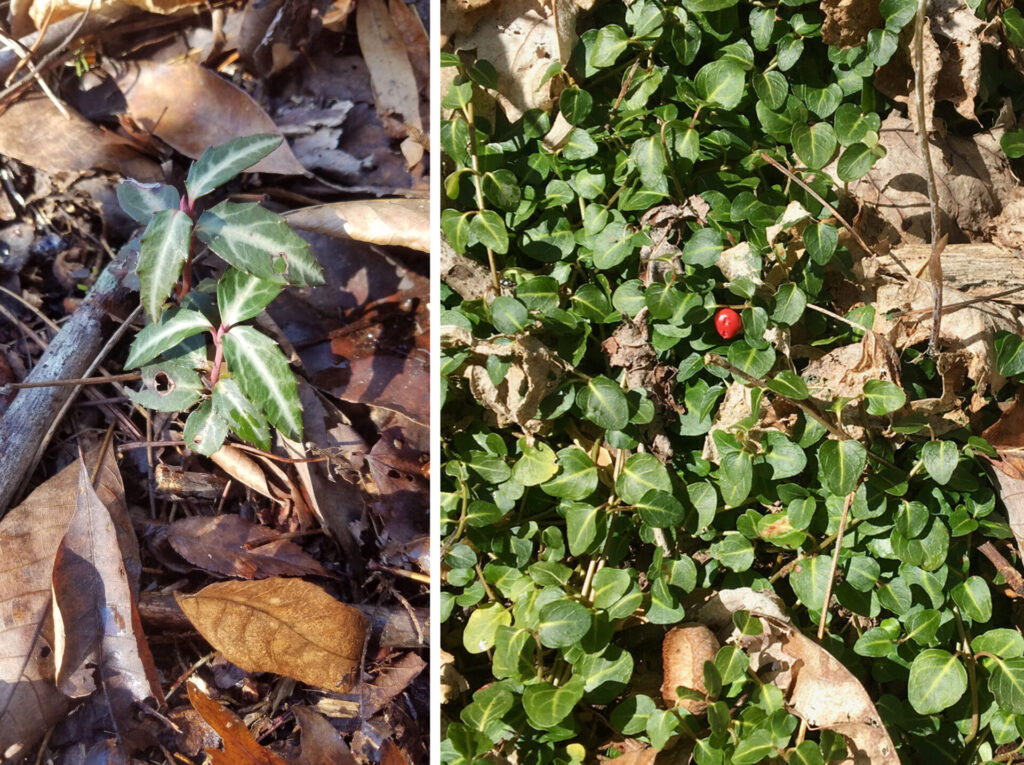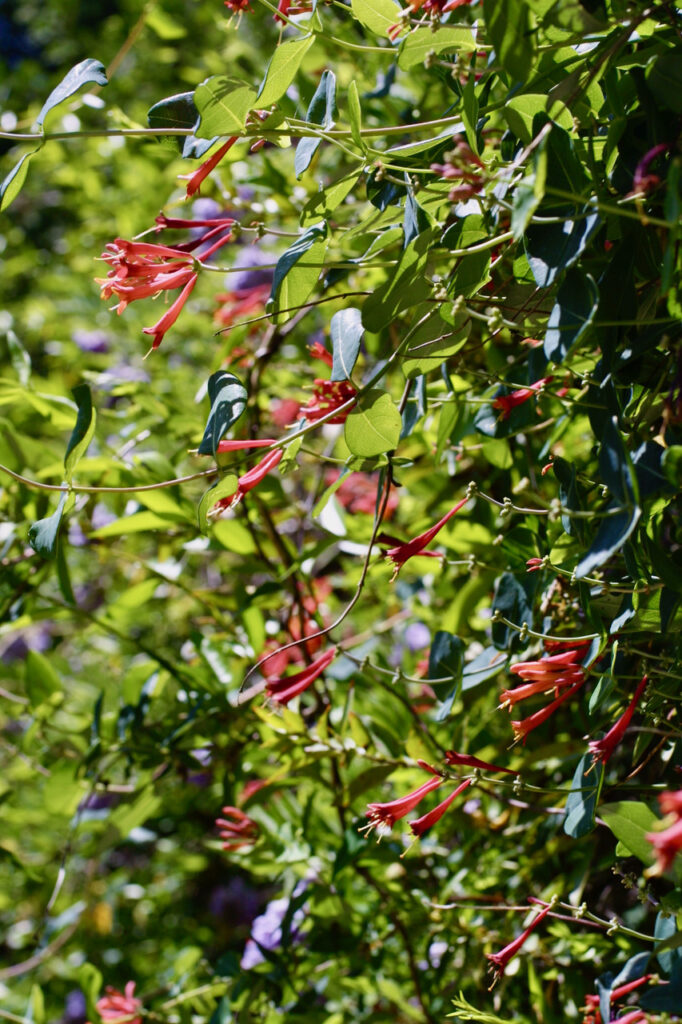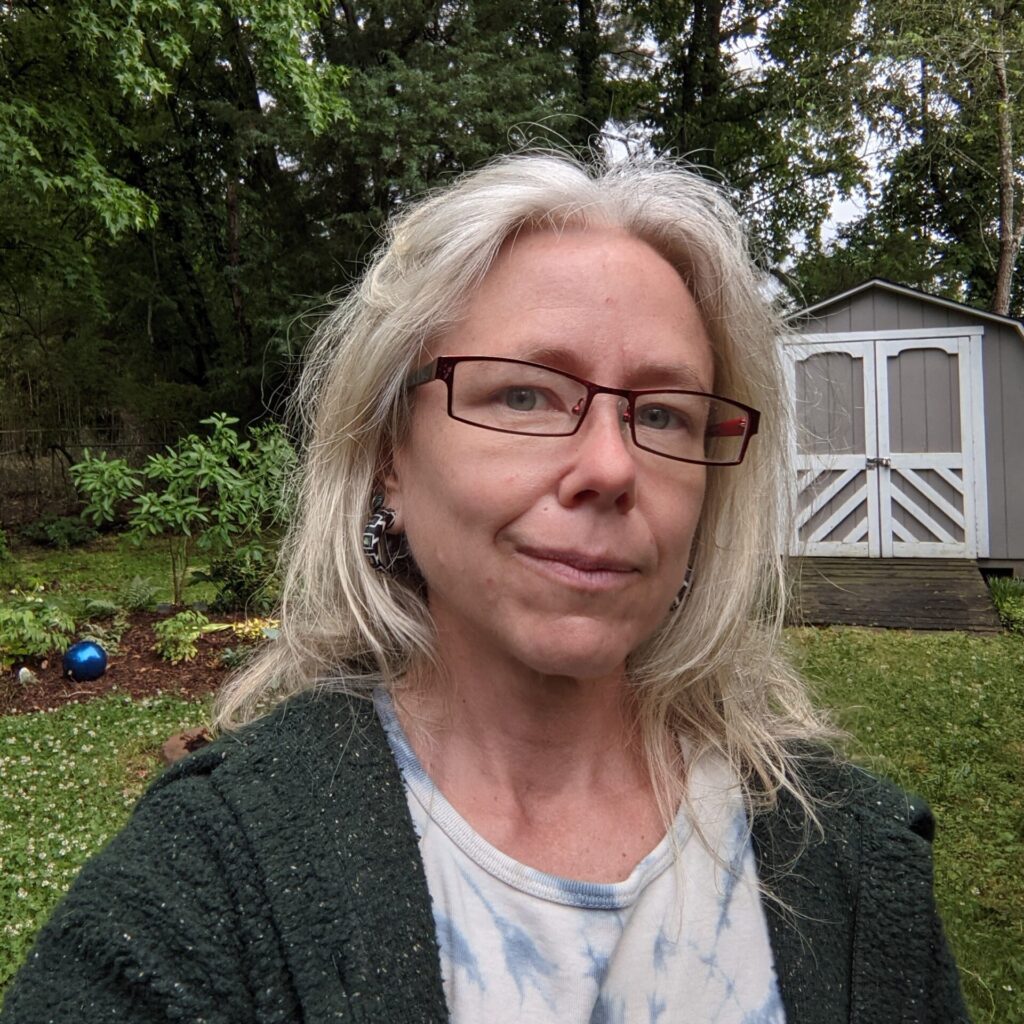By Ellen Cooper
As one gardener works with others, they all find joy in connecting, sharing, and building.
Gardening and native plants: my “why”
Many of us “native plant people” are also gardening enthusiasts. Myself included. For me, it seems quite natural to want to bring the native plants I love close to my home, and perhaps this is in part how plants move me. But it goes deeper than that. My love for native plants involves, of course, an aesthetic attraction to them: the cool shade of Blue Cohosh leaves, the architecture of Eastern Rose Mandarin’s twisted stalks, the funky flowers of our wild gingers. It also includes a desire for these natives to thrive, to flourish along with the other life they support and depend on—birds, insects, animals, and yes, all the wondrously mysterious microbial communities above and below the soil surface. I get a lot of joy from learning about and interacting with my native plants.
I am also moved to share my joy with others. Joy is like that. Somehow, part of the joy is in the sharing of it. Through my role as a professional gardener, I am blessed with opportunities to do just that. In that role, I interact with other plant-focused people.
Gardeners learn from plants and from each other

I learn about their own relationships to gardening and to plants, both natives and non-natives. I get insight to their aesthetics, their current knowledge and their philosophies surrounding plants and gardening, and inevitably also ecology and environmental awareness. In short, I gain a broader perspective on what moves other gardeners to build relationships with native plants, and I learn how I can help foster those relationships by serving as a helpmate, a model, a cheerleader, or sometimes a teacher. Serving in this way, I’ve witnessed transformations of many gardens, and have been fortunate to share in the joys of those I work with, some which I’ll share here.
A few stories
I think of one enthusiastic couple I consulted for, and how they tackled huge projects to transform the front lawn of a traditional older home to a natives-friendly yet functional front garden. Lawn was minimized, understory plants were added, and sunny spots were shared with pollinators, partly planted in native perennials and partly allocated to raised vegetable beds. All of it was completely visible to passersby. That takes not only a lot of energy but also a certain amount of bravery and conviction in the face of current social norms. They’re showing their neighbors what’s possible. Every time I visit I feel their pride and delight. I’m excited not just for their accomplishments so far, but also for what they’re discovering as they work with each species.
Patience and vision
I’m also excited for the future of their native garden five years or ten years down the road– they are cultivating a legacy that ultimately benefits all of us.
Sometimes, nothing gives more satisfaction than restoring a portion of land to something a little closer to its original ecology. A few years ago, one determined gardener and I set out to do just that on a typical residential lot overtaken by English Ivy, Japanese Honeysuckle and Common Periwinkle, among other invaders. As we literally rolled back blankets of vines, we uncovered patches of heartleaf gingers, deciduous wild ginger, bellworts, Partridgeberry, trilliums, Spotted Wintergreen and more.

After we got the “noise” out of the way the transition seemed to happen magically all on its own. The patches of the ground-floor natives have flourished and spread, and other natives have moved in. She’s now found Northern Spicebush, viburnums, and Eastern Wahoo–I know because she shares photos of each new discovery with me. Not only did the native plants benefit, but she did too: she loved looking out for and learning about each new species, knowing that she helped make it happen.
Occasionally, I meet a client who is just beginning to learn about gardening and native plants. There’s a special joy in working with someone who is just starting on their way: it reminds me of my own past and I think of all the wonderful discoveries in store for that person. A few years ago, I worked with a somewhat reluctant beginner gardener. At the outset, it was clear she didn’t care for gardening work but felt a sense of obligation to the garden her mother had started many years ago.
Some of us are new gardeners
There was an awful lot to do and it was intimidating. So we started small. She knew she wanted to bring in more native plants and the birds and insects they attract. So we focused on the “pollinator bed,” cleaned it of invaders, corralled the more enthusiastic growers, optimized the arrangement of the plants, and added some more native species. Throughout the process, she shared more and more stories about her mother’s gardening, and her friends started to offer helping hands and shares of plants from their own native gardens.

It seemed that, as this one small bed transformed, so did her relationship to it as well as to her friends. She started to warm to gardening and especially to the plants we had worked with and cared for. For her, it seemed, being moved by plants went far beyond the borders of the garden bed.
Now, before you get the notion that all the people I work with are native plant “heroes,” let me say that not all of them (as of yet) have been motivated to garden with natives. Some still prefer exotic species for various reasons, and some even express a resistance to working with natives or a resentment at having been pressured at one time to exchange natives for non-native plantings. But viewpoints evolve over a lifetime, and perhaps, with the right encouragement, some of these people will be pro-native gardeners in the future.
Moving Forward

As I write this, I am about to install a Coral Honeysuckle (in a carefully chosen spot!) in the garden of a friend who is just learning about native plants. She probably has seen this plant at some point, but doesn’t know it. I’m looking forward to the joy this plant will bring her: the brilliant colors of the flowers, the hummingbirds and bees that will start visiting, perhaps the Jenny Wren that might build a nest in the twists of the vine. I know she’ll be touched by all of these things, and that brings a smile not just to her face but to mine also. It reminds me that we’re not just moved by plants, we’re connected through them. That keeps me going.
By Ellen Cooper
Native Plant News – Summer 2022

Ellen Cooper is a professional gardener and environmental scientist in Durham. When not busy working, she enjoys exploring in western North Carolina, playing music and being managed by cats. She is a member of the Margaret Reid (Triangle) chapter of NC Native Plant Society.

